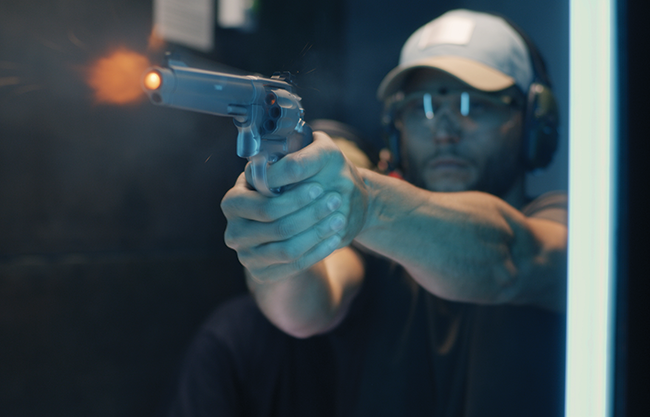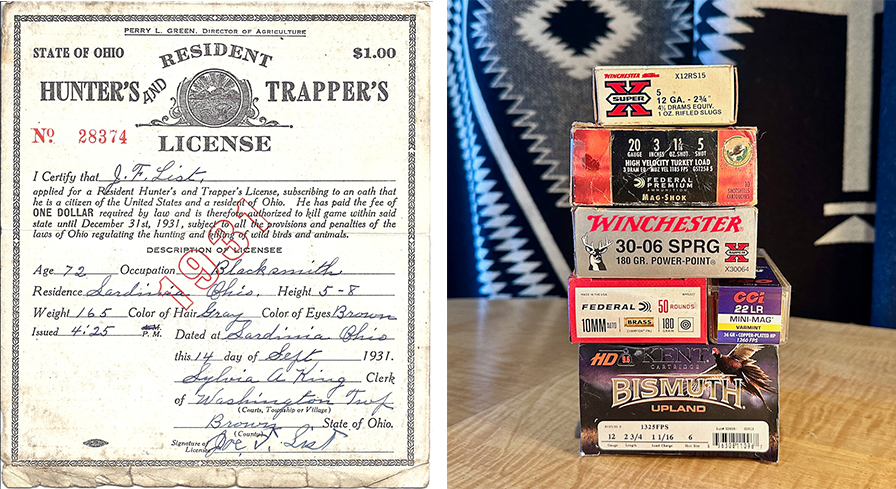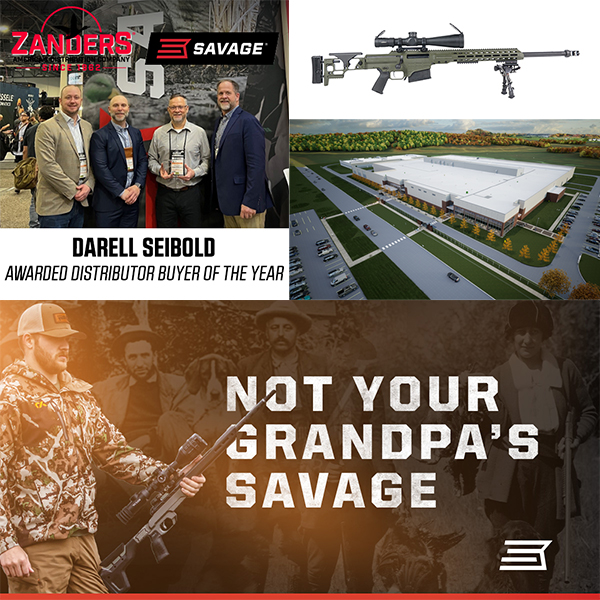So, You Want To Add A Range?
Considerations For Taking A (Big) Next Step
You’re selling firearms and ammunition, and a fair share of accessories. Business is good. But you don’t have a shooting range, and when customers purchase guns they have to go across town to shoot them.
Is it time to up your game and add a range? Adding a range is a big undertaking. The preparation to open a range is an order of magnitude larger than the paperwork to get your FFL and open your store was.
We spoke with two experienced sources to answer the big questions for those businesses looking to expand into range ownership: Miles Hall, senior consultant for Hall-N-Hall, and Jeff Swanson, managing member at NexGen Range Consulting.
Give Customers What They Want
According to Hall, dealers are the front line of the shooting sports world.
“Serving the needs of their guests is always on the minds of the more successful dealers,” he noted. “The first thing is to see if there is a need for a range in the area they serve. If so, having a range attached to the store is best, as it helps with easier access. Ranges can add significantly to draw and appeal and to the bottom line.”
One way to find out if there’s a need for a range, according to Hall, is simply to ask your customers.
“They will always tell you the needs they have,” he said. “Next, see what options in the range arena are available, along with their condition. And talk with a consultant. A good consultant can bring their years of experience and help guide the dealer going forward.”
Questions That Need Answers — Quickly
Before you even start to think seriously about adding a range, you need to have your finances in order.
“You must plan out the cost of the building along with the equipment, supplies, classrooms, storage, added overhead and staffing,” Hall advised. “The current operation must be on solid ground with a reserve to help with the cost of preparing for this addition.”
Don’t let owing money on your current store in itself be the reason you don’t move forward.
“How much you owe is not as critical, as that figure often varies,” Hall said. “But being current with everything you have, and holding a good reserve of cash, is essential.”
According to Swanson, adding a range means being able to provide what he terms the “big three” profit centers for customers: the range itself, training and membership.
“The retail profit center is the most volatile,” Swanson observed. “Retail will always be cyclical. Once you add a range, you have the ability to start engaging a captive audience who comes into your facility. It allows you to expand beyond just retail and add far more profitable profit centers of shooting range and rentals, training and classes and memberships. Each of those profit centers carries a much higher net profit.”
To be financially sound enough to expand your business, Swanson shared you should take stock of your access to cash or other liquidity.
“It may be through your own efforts of savings and current retail cash flow, investors or bankers or a combination of all three,” he noted. “To add a range to an existing brick-and-mortar, you’re looking at two big costs. One is the cost of the building itself, which is usually either concrete filled block or tilt-up concrete. The average cost per square foot across the country for just the building is about $250 per square foot right now.”
The other significant cost is the range equipment.
“The range equipment and the lead filtration equipment generally starts at about $85,000 per 25-yard lane, installed,” Swanson said. “This includes the stalls, the retrieval equipment, the bullet traps, the baffles and all of the comfort air and lead filtration for each lane.”
Depending on what enhancements you add, the cost per lane can go up significantly.
Having The Right Setup Is Crucial
Once you’re confident you can manage this addition financially, the next step is to think about a building. This isn’t a small piece of the undertaking; having the right building is crucial.
“The number of lanes you’re considering will impact this,” Hall stated. “With today’s advancement in range technology, you can build what’s known as a ‘Box within a Box.’ That said, the floor must be strong enough to hold the added weight of equipment, including the lead and the traps. The walls must be able to handle the unique heating, cooling and exhausting of air. The engineering that goes into building the optimal range is stunning.”
Also think about where you’re going to put the building. Obviously, expanding your existing store is ideal. If you’re not able to, however, you need to take into consideration easy access from main highways, parking and local demand for what you have to offer.
“Use experts, trust them and follow their guidance,” Hall said. “Keep things simple overall. We provide our clients with a project evaluation guide that helps the dealer decide if they are ready for something like this. Defining the goal and determining if there is a market are crucial steps.”
Swanson recommends choosing a location that’s feasible.
“If you’re close to a school or a commercial area, where permitting and zoning are going to be difficult, you may have to get a special use permit or variances,” Swanson noted. “It’s better to consider a different location where you can add the range easily and more efficiently and economically.”
Swanson points out, in general, about half the space in a new range building is dedicated to the range itself, and the other half to other uses such as the retail floor, offices, storage, classrooms, restrooms, food and beverage and other non-range uses.
“If you’re planning to add 10 lanes of 25 yards, it’s in the ballpark of 5,000 square feet of space,” he said. “You’ll need 5,000 feet more for all the other uses, so you’ll need about a 10,000 square-foot building.”
Don’t Skimp On This
Swanson said the HVAC and lead removal systems are the number-one thing range owners should not skimp on.
“Many range owners say they’re not worried about that part because they have a brother-in-law who has an HVAC business,” he shared. “But if he doesn’t have experience specifically in this industry — and in the highly technical design that goes into the appropriate lead filtration systems to capture lead — this is where OSHA can come knocking. Go to one of the large range lead filtration providers and have them design and install a system, and then follow all of their maintenance guidelines.”
Big Investment, Big Opportunity
Adding it all together, the starting price for a 10-lane range is going to be well over $3 million. It’s a substantial investment, but it also will give you significant return on that investment.
“Once you add a range, you’re in much more control of your own destiny,” said Swanson. “Because there’s a high cost of entry, the three profit centers of range, training and membership aren’t on every corner, and you don’t have to compare yourself to the big boxes or to those online, because you have people coming in to use your facility.”
Getting customers into your facility is one challenge, keeping them becomes the next.
“Once they’re in, keeping them in there longer increases the per-person ticket average, which makes your overall business model stronger and more insulated from the cyclical forces that apply to the retail profit center,” Swanson stated.
Make Your Facility A Destination
According to Swanson, two of the most important design factors to make a range a destination are adding food/beverage and classroom space.
“When you add the range, if your brick-and-mortar retail doesn’t already have space for a classroom, membership lounge and the like, be sure to include those things,” he said. “Also try to include a small area for food and beverage. It can be as simple as a reach-in kiosk and a small lounge area, or as large as a full café you lease out to a local catering company or restaurateur.”
When you have classroom space for training, you can also use it as event space.
“This can be the most important marketing tool owner-operators have,” Swanson added. “In addition to hosting public events, you can also rent out your classroom space when it’s not being used for training for birthday parties, bachelor parties, corporate team building events and Christmas parties. This gets people coming in your door for an event who may have never stepped into a range before.”
Once they’re in the door, it’s up to you to get them interested in the shooting sports.
Keep Guests At The Center
Expanding your business in any way carries risk, but there are things you can do to minimize the risk and increase the likelihood you will succeed.
“The best predictor of success is to have a strong business plan and pro forma before you start down this path,” Hall advised. “The ranges I know of that have gotten into trouble are those that have overbuilt for their markets, or have been under-capitalized or mismanaged after they were open.”
He continued, “Know how you’re doing at retail. If you realize you’re leaving money on the table from customers who buy firearms in your place and go elsewhere to shoot them or take a class, put it all down on paper and get the help of people who have owned and operated shooting ranges. When coupled with a strong and conservative pro forma and business plan, this gives you the best chance for success. It gives you a path to profitability.”
At the end of the day, dealers must make everything they do about serving their guests and their community.
“Spirit of the operation is number one,” Hall said. “The team who loves their guests and understands they are about growing the shooting sports will show in everyday ways their store is the place to be. This spirit will encourage folks to want to be there, to grow their knowledge, to be the best and be happy doing it all. Spirit will carry a business further, faster and longer than anything else.”





